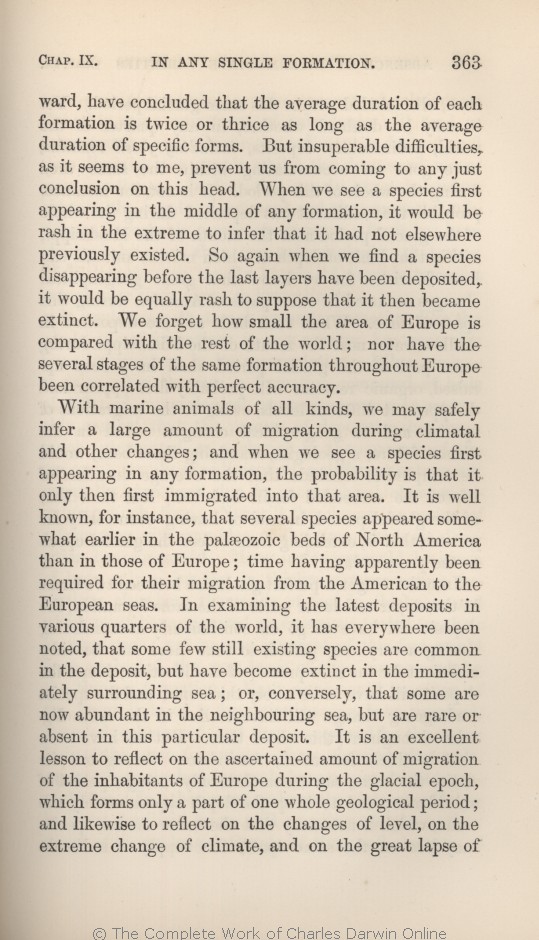have concluded that the average duration of each formation is twice or thrice as long as the average duration of specific forms. But insuperable difficulties, as it seems to me, prevent us
from coming | from coming 1866 1869 1872 | | coming 1859 1860 1861 |
| last 1866 1869 1872 | | uppermost 1859 1860 1861 |
| ..... 1866 1869 1872 | | wholly 1859 1860 1861 |
|
|
With | With 1859 1860 1861 1866 1869 |
| We may safely infer that with 1872 |
| kinds, 1859 1860 1861 1866 1869 | | kinds 1872 |
| we may safely infer 1859 1860 1861 1866 1869 |
| there has been 1872 |
| during 1859 1860 1861 1866 1869 | | due to 1872 |
| well known, 1859 1860 1861 1866 1869 | | well-known, 1872 |
| some-what 1861 1866 1869 | | somewhat 1859 1860 1872 |
| in 1866 1869 1872 | | of 1859 1860 1861 |
| glacial 1861 1866 1869 1872 | | Glacial 1859 1860 |
| epoch, 1869 1872 | | period, 1859 1860 1861 | | period; 1866 |
| period; 1859 1861 1866 1869 1872 | | period: 1860 |
| ..... 1869 1872 | | great 1859 1860 1861 1866 |
| extreme 1869 1872 | | inordinately great 1859 1860 1861 1866 |
| and on the great 1869 1872 |
| on the prodigious 1859 1860 1861 1866 |
|









